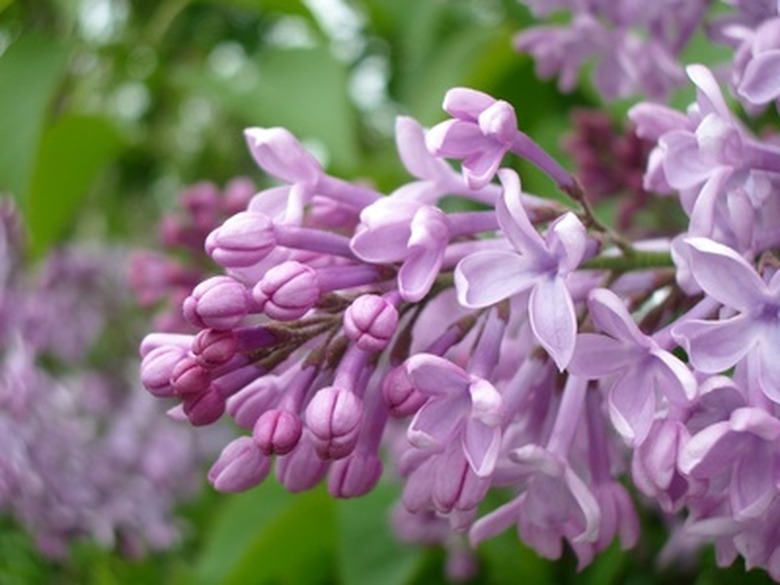How To Water Clay Soil
Things Needed
- Organic matter
- Tiller
- Pitch fork
- Mulch
- Trowel
- Hose
Soil that contains a lot of clay does not drain water well, causing the soil to remain wet for long periods of time. Water also has a difficult time soaking far into the ground to feed deep roots. The best way to combat clay soil is by planting plants, trees, grasses, bushes and flowers that are grow well in clay soil, such as lilacs and elms. Then with a few techniques before and after planting, you can successfully keep those plants well watered so they can to thrive.
Step 1
Amend the soil with organic matter such as compost and coarse sand to improve the soil's water drainage. Use approximately one cubic yard of each for every 100 square feet. Till them evenly into the top 6 to 12 inches of soil and only when the clay soil is dry or nearly dry.
- Soil that contains a lot of clay does not drain water well, causing the soil to remain wet for long periods of time.
Step 2
Aerate clay soil to help improve drainage. Using a tiller will help aerate the soil, but so will taking a pitch fork and loosening the soil. You can also rent an aerator from a garden supply center, if desired.
Step 3
Add mulch around plants and trees. Since water takes longer to soak into clay soil, mulch will allow more water to seep into the soil before it evaporates. Use about 2 to 3 inches of organic mulch, such as shredded bark.
Step 4
Check the soil to a depth of about 3 inches with a trowel to see if it is wet before watering it. Just because the top is dry doesn't mean the soil isn't wet. Since rain can throw off a watering schedule and clay soil does not drain water well, do not water plants grown in clay soil with an automated system.
- Aerate clay soil to help improve drainage.
- Using a tiller will help aerate the soil, but so will taking a pitch fork and loosening the soil.
Step 5
Water plants slowly. Set the hose to a drip or slow trickle and place it near the base of a plant or lay out a soaker hose. Leave it on for about 30 to 60 minutes. This is not an exact science, so check to make sure the water is not running off as you water the plant. Check the soil's moisture level 6 inches deep the next day to see if you need to adjust your watering technique.
